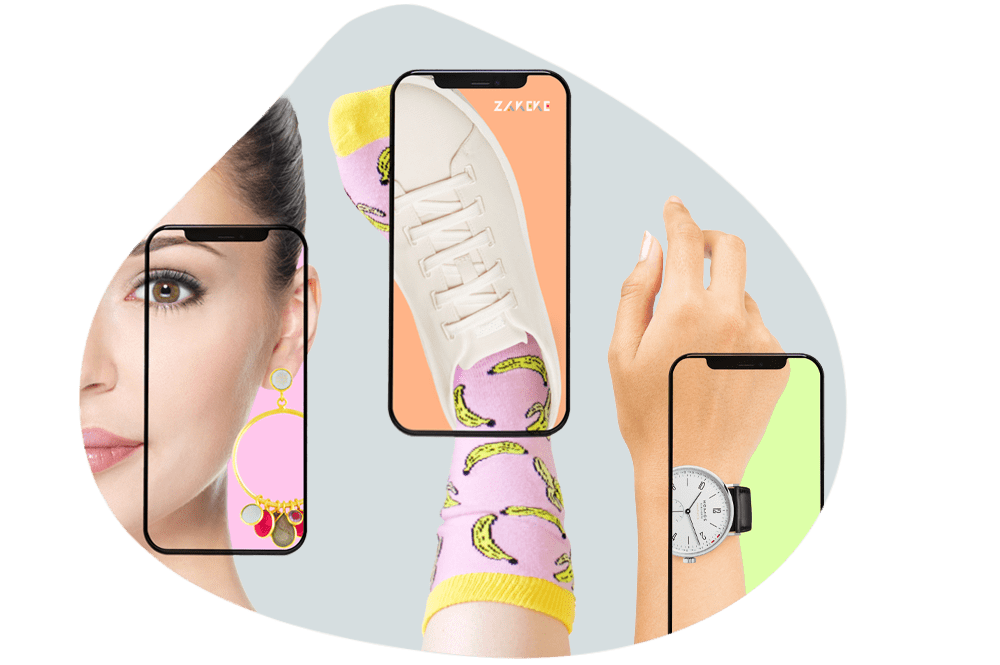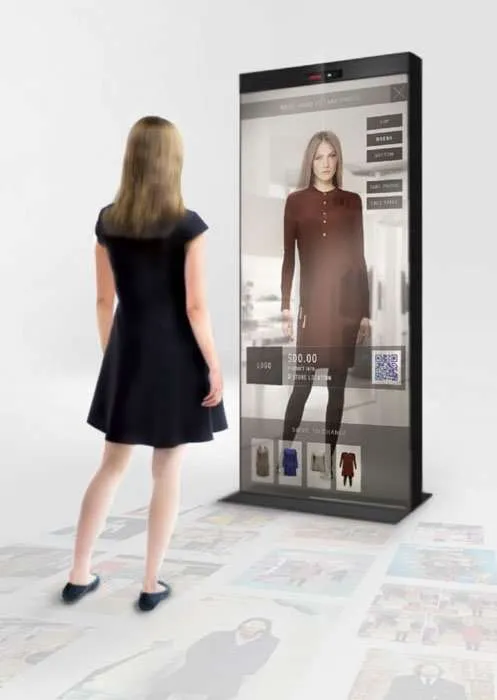The Future of Retail with Extended Reality (XR)
- 8 minutes read - 1556 wordseXtended Reality (XR/AR/VR) technology is changing the reality of almost every industry today by enhancing user experiences. XR adoption in the retail industry is also quite natural, let’s understand how it is shaping up the future of retail.
In today’s retail landscape, technology is reshaping customer experiences, with XR leading the charge. Extended Reality (XR), including VR, AR, and MR, offers immersive experiences blending the physical and virtual worlds. From head-mounted displays to smart glasses and smartphones and beyond, XR is changing how we interact with retail environments.
Now, Apple VisionPro must have already ignited the XR or spatial computing discussion around you, let’s explore the various use cases of XR in retail and how it is transforming the way we shop.
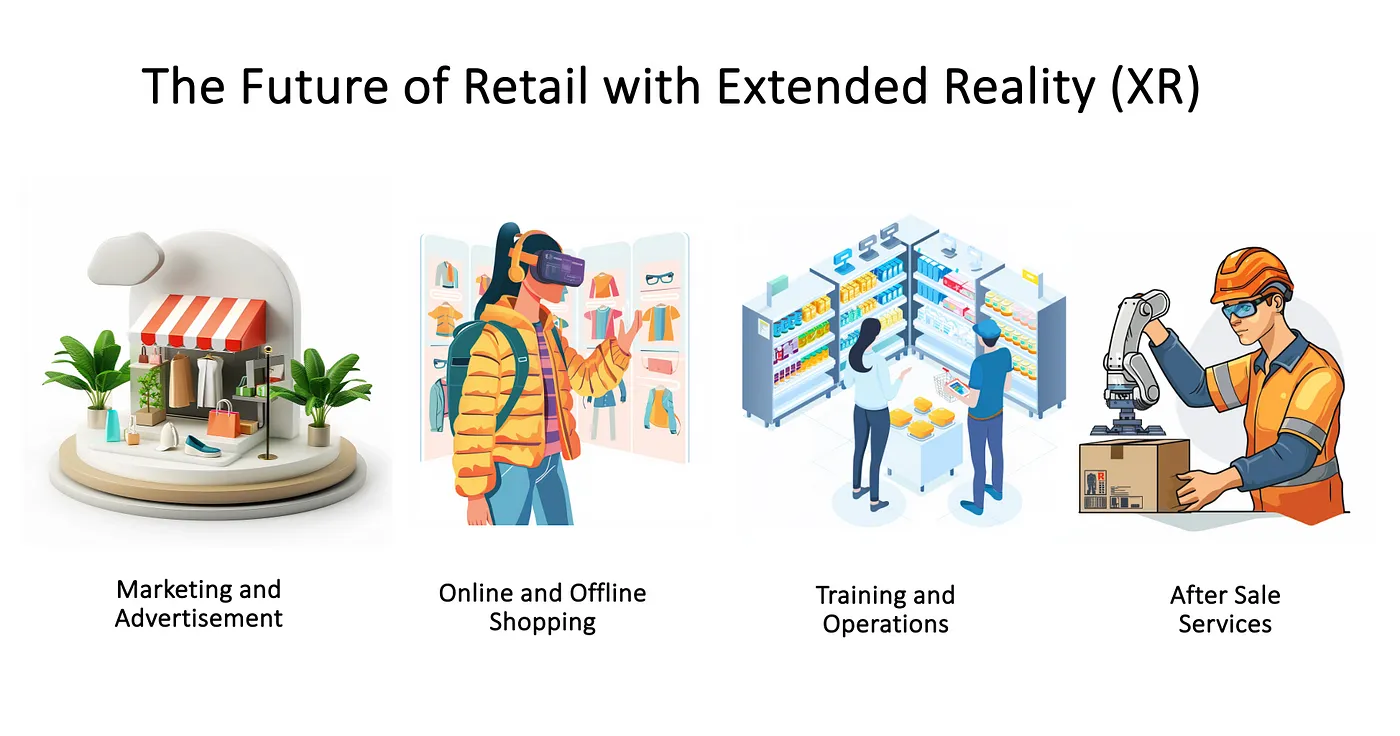
Multi-Dimensional Marketing and Advertising
XR can be used to deliver the brand’s values to consumers in engaging experiences, reinforcing consumer expectations, and making them feel more connected. Here are few examples of XR enabled marketing :
- XR In-App Advertisement: Imagine scrolling through your favorite XR app or playing a virtual game and encountering targeted advertisements seamlessly integrated into the virtual environment. XR in-app ads offer a new level of engagement, capturing the attention of users immersed in virtual worlds.
- Holographic Displays and Smart Mirrors: Retailers can leverage holographic displays and smart mirrors powered by XR to create captivating advertisements and interactive experiences. These displays can respond to user gestures and proximity, providing personalized recommendations and information about products. Example below
- 3D Signage and Interactive billboards: Traditional signage is given a futuristic upgrade with XR, as retailers can showcase products in 3D and offer interactive displays that engage customers on a deeper level. This immersive approach to marketing enhances brand visibility and product appeal.
- AR/VR Hotspots: XR hotspots/location within stores/city allow customers to interact with virtual elements overlaid on the physical location. By scanning codes or tapping on XR-enabled displays, just the world anchors, shoppers can access additional product information, promotions, and social interactions.
- AR Packaging: The package of products can be a great marketing tool, and AR can put life on the packaging, by bringing XR content on them.
Extended Online Shopping
Covid time, we anticipated of XR making way in shopping experiences and now it is happening in multiple forms :
- Virtual Try-On / Try Before Buying — One of the most compelling use cases of XR in retail is virtual try-on. Customers can use XR applications to try on clothing, makeup, accessories, and even furniture in a virtual setting. This “try before you buy” experience enables customers to make informed decisions about fit, style, and color without physically trying on items.
-
Product Insights : XR provides an immersive way for customers to explore products in detail. They can virtually dissect products, view internal components, and understand how they work. This level of product insight enhances customer understanding and confidence in their purchase decisions.
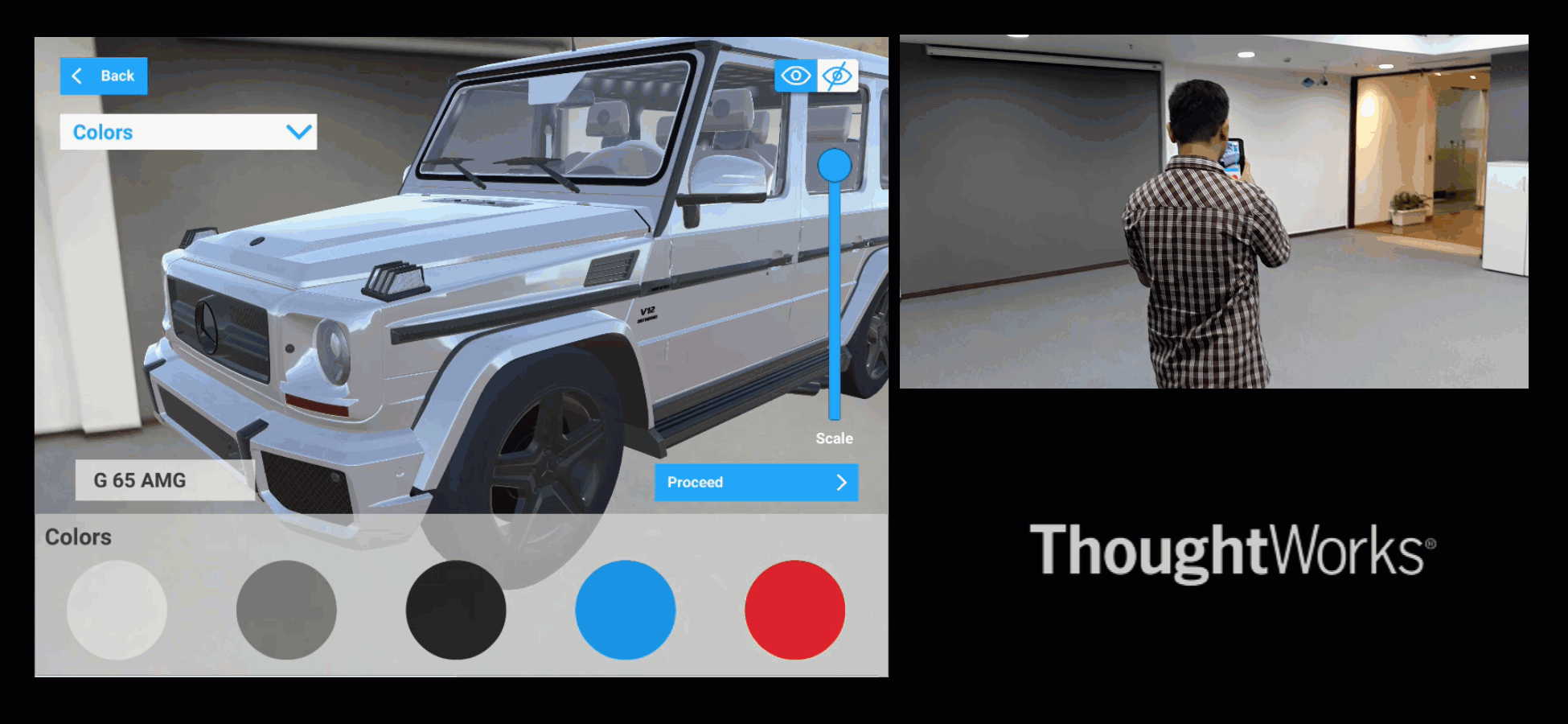 Product customization and visualization at Thoughtworks
Product customization and visualization at Thoughtworks -
Virtual Communal Shopping: Shopping becomes a social experience in XR with virtual communal shopping. Users can invite friends to join virtual shopping sessions, browse products together, and share feedback and recommendations in real-time. This collaborative approach enhances the social aspect of shopping.
-
Shopping in Games: For gaming enthusiasts, XR offers integrated shopping experiences within virtual worlds. Players can shop for virtual items and accessories to enhance their gaming experience, creating new revenue streams for retailers within the gaming ecosystem.
-
Web3 and Metaverse shopping: With the advent of Web3 gaming and the metaverse environment, along with the rise of NFTs and decentralized gaming, shopping experiences are becoming integrated into these platforms.
Extended In-Store Experience
-
Indoor Navigation: Navigating large retail spaces can be daunting, especially for new visitors. XR-based indoor navigation provides interactive maps and directions within stores, guiding customers to specific products or departments. Language barriers are overcome with instructions displayed in the user’s preferred language.
 Indoor Navigation at one of Thoughtworks Office
Indoor Navigation at one of Thoughtworks Office -
Offers and Promotions: Retailers can deliver personalized offers and promotions through XR experiences. Customers receive notifications and alerts on their XR devices, allowing them to explore exclusive deals and discounts as they move through the store.
-
Virtual Try-On: In-store XR displays and smart mirrors enable customers to virtually try on products without physically handling them. From clothing and accessories to makeup and eyewear, shoppers can see themselves in different styles, colors, and sizes, enhancing their shopping experience.
- Social Collaboration: XR facilitates social interactions and collaboration among shoppers. Customers can leave comments, reviews, and recommendations directly in the XR environment, creating a community-driven shopping experience. Friends can virtually try on items together, share opinions, and make joint purchasing decisions.
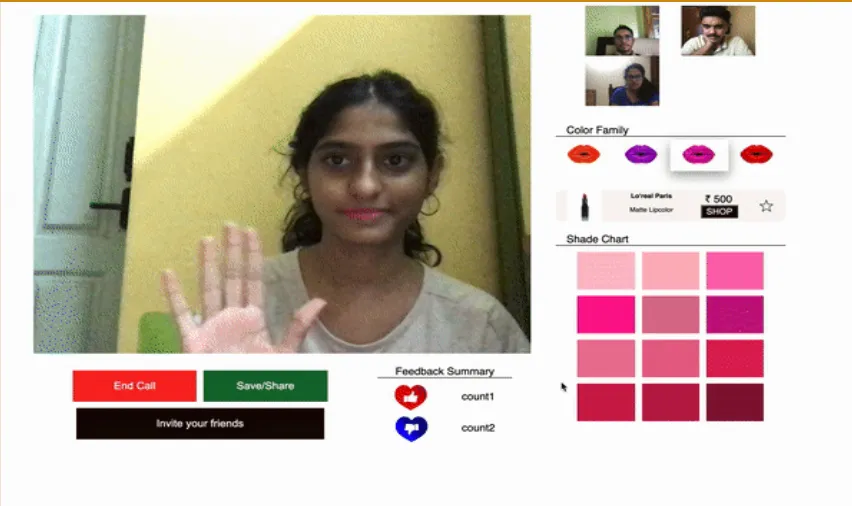 A concept by XR community at Thoughtworks for a collaboration while live shopping, and virtaul try on
A concept by XR community at Thoughtworks for a collaboration while live shopping, and virtaul try on
- Smart Assistant: Imagine having a virtual shopping assistant at your fingertips while browsing in-store. XR devices can serve as smart assistants, providing personalized product recommendations, answering questions, and offering detailed information about products. This hands-free assistance enhances customer engagement and satisfaction.
- Product Storytelling: With XR, retailers can narrate the story behind their products in a compelling and immersive way. Customers can learn about the history, craftsmanship, and unique features of products through interactive XR experiences. This storytelling approach adds depth and authenticity to the shopping journey.
 Thoughtworks’s Tellme More.
Thoughtworks’s Tellme More.
Blurring Physical and Virtual Experience
-
Virtual Store Experience: For those unable to visit physical stores, XR offers a virtual shopping experience that replicates the ambiance and layout of brick-and-mortar locations. Customers can browse aisles, explore products, and make purchases within a virtual store environment. This immersive experience brings the store to the customer’s doorstep.
-
Zero Store : The zero store concept redefines retail by offering a physical space customers without any physical product, they can explore product virtually and purchase products without the need for owning XR devices. With a diverse catalog of items and the ability to host multiple product categories in the same space, the Zero Store provides a seamless blend of entertainment and shopping.
-
Journey from Home: Planning a shopping trip becomes effortless with XR. Customers can create virtual shopping lists at home, complete with preferred products and promotions. When ready to shop, the XR app guides them through optimal paths in the city and stores, highlighting offers along the way. This curated shopping journey maximizes convenience and efficiency.
-
Shared experience: Imagine going to a physical store, and inviting friends to join the location virtually. Shared experience of physical and virtual would be interesting for collaborative shopping. Gucci has introduced Live shopping provide store experience from remote.
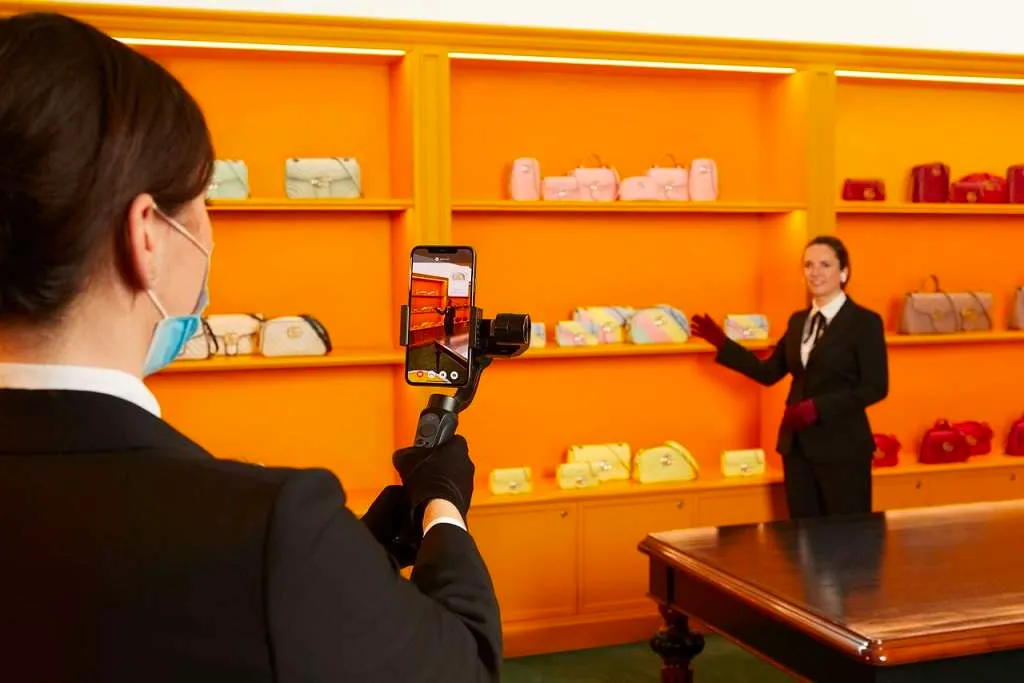 Live shopping
Live shopping
Operations
- Warehouse Management: XR technologies revolutionize warehouse operations by providing inventory tracking and management. Using computer vision, warehouse staff can locate items, optimize storage, and fulfill orders efficiently. XR-based indoor navigation guides workers through the warehouse, reducing errors and improving productivity.
- Training and Onboarding: XR is a powerful tool for training retail staff and onboarding new employees. From store operations to customer service scenarios, XR simulations provide hands-on training in a safe and controlled environment. Employees can practice tasks, learn protocols, and familiarize themselves with products, enhancing their skills and confidence.
- Compliance and Audit: Ensuring operational compliance and efficiency is essential for retailers. XR solutions streamline workflow processes, guide staff through standard operating procedures, and provide on-demand assistance. Compliance checks and audits become seamless with XR, monitoring effectiveness and adherence to regulations.
- Dynamic pricing: Placing XR could help device out dynamic pricing, and offers based on the footfall, and navigation. Managing these with XR enabled solution is much easier then physical tags.
After-Sale Services
- Installation and Assembly: XR simplifies the installation and assembly process for customers. Whether assembling furniture, electronics, or appliances, XR provides step-by-step guides and interactive instructions. Customers can follow along in augmented reality, reducing errors and frustration.
- Repair and Service: When products require repair or servicing, XR tools offer valuable support. Customers can troubleshoot issues using XR-guided instructions, minimizing downtime and the need for expert assistance. Service technicians can remotely assess problems and provide visual guidance, improving efficiency and customer satisfaction. For example refer here Dell’s AR Assistant App.
- Product Rating and Feedback: Gathering feedback and product ratings becomes more engaging with XR. Customers can leave spatial reviews and ratings in 3D environments, providing detailed feedback on their experiences. This immersive approach to feedback enhances the authenticity and usefulness of customer reviews.
- Alerts and Warnings: XR solutions can proactively alert customers about product usage and safety. Whether it’s proper handling instructions or maintenance reminders, XR-enabled alerts ensure customers use products safely and efficiently. This feature adds an extra layer of customer care and product longevity.
Conclusion
The integration of Extended Reality (XR) in retail is transforming the industry by providing immersive and engaging experiences for customers. From multi-dimensional marketing and virtual try-on to smart assistants and virtual store experiences, XR offers a multitude of benefits for retailers and shoppers alike.
As retailers embrace XR technologies, they enhance customer engagement, streamline operations, reduce returns and create personalized shopping journeys. Whether in-store or online, XR blurs the lines between physical and virtual worlds, opening up new possibilities for the future of retail. By leveraging XR use cases in retail, businesses can stay ahead of the curve, offering innovative and interactive experiences that resonate with modern consumers. The future of retail with XR is bright, promising a more immersive, efficient, and customer-centric shopping experience for all.
This article is originally published on XR Practices Publication
#xr #ar #vr #mr #usecases #thoughtworks #Enterprise #technology #retail #advertisement #marketing #metaverse
